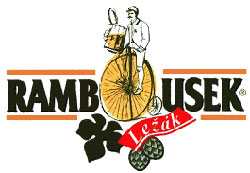 I’m beginning to realize there is a chance I will break down and try Miller Chill. Got to be curious, right? Check out the number of posts at Beer Therapy. Somebody is feeling the passion.
I’m beginning to realize there is a chance I will break down and try Miller Chill. Got to be curious, right? Check out the number of posts at Beer Therapy. Somebody is feeling the passion.
Saturday is Cinco de Mayo and since I can’t be in San Diego for the Port/Lost Abbey Anniversary Party (you can read brewer Tomme Arthur’s thoughts on the first year here) perhaps I can take the lead from an excellent column by Peter Rowe in The San Diego Union-Tribune about Chil, Mexican micheladas and Mexican beer in general.
Just so you know, you make a michelada by pouring two or three fingers of lime juice into a salt-rimmed glass before blending in a some beer – to your personal taste. Most often it is garnished with lime, but you could use lemon and you might add some hot sauce. Miller Chill is already flavored with lime and salt.
Rowe reveals that Mexican brewers are not fans of michelada.
“They don’t like them,” said Juan Ramon Vera Martinez, public relations coordinator for Cervecera Tecate.
There are two schools of thought here, each worth pondering as we approach Cinco de Mayo. One school views brewers as artists. The notion that bartenders can “improve” artworks with a splash or a sprinkle is heresy. It’s like distributing Magic Markers at the Louvre’s entrance. Hey, kids, let’s improve the “Mona Lisa”!
The other school, though, is not alarmed. Why fuss about beer, one of life’s simple pleasures?
Yes, great brewers are master craftsmen. Their work is sublime – but also plentiful. If you “spoil” the occasional liquid masterwork with a shot of citrus juice, don’t worry. Pristine beer is available by the truckload.
Beer as art? Brewers as artists?
That’s a topic for another day (tomorrow) and good enough excuse to hold off buying Miller Chill.

 We already know this, but brewing innovation doesn’t stop at the U.S. borders. It isn’t limited to Belgium, or even to such new-ish hotbeds as Denmark and Italy.
We already know this, but brewing innovation doesn’t stop at the U.S. borders. It isn’t limited to Belgium, or even to such new-ish hotbeds as Denmark and Italy.